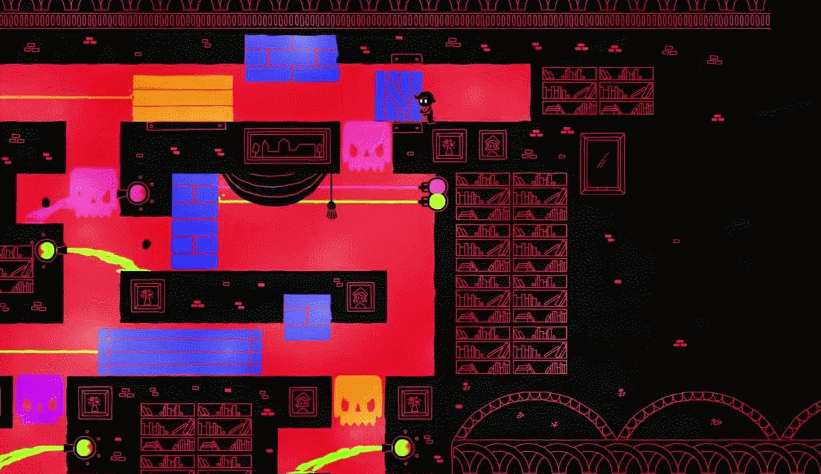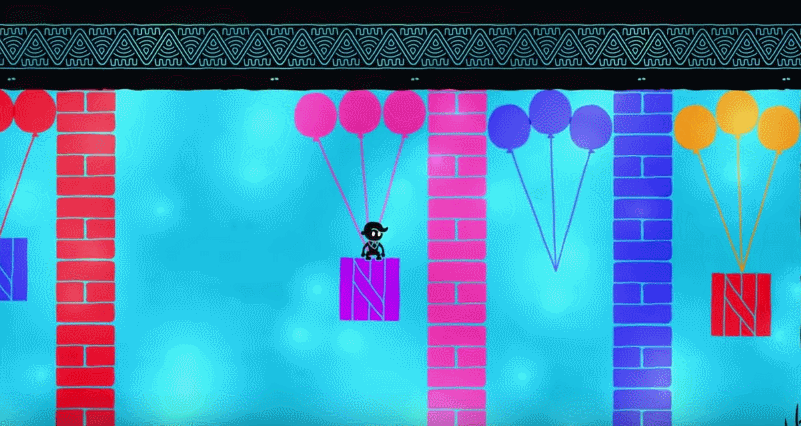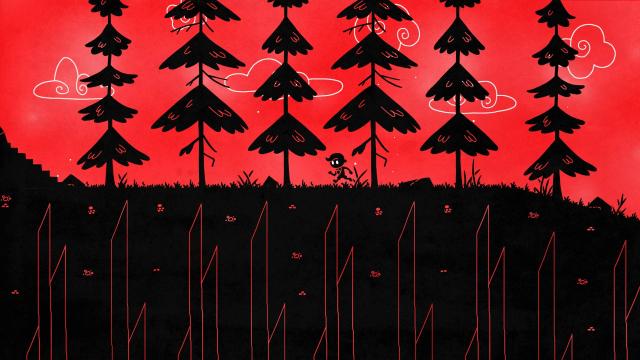Two years ago, Alkis Livathinos had no idea he’d eventually be working on a small puzzle game called Hue. The game’s creators, Henry Hoffman and Dan da Rocha, who had already begun working on the project, didn’t know either.
In a way though, the match had already been made. After licensing some of Livathinos’s music for a trailer, Hoffman and da Rocha, who had just come off creating Q.U.B.E., eventually tracked him down after every other plan had fallen through. Luckily for them, he lived nearby in London and was desperate to create a video game soundtrack.
“As cheesy as it sounds, I watched Indie Game: The Movie, and after that I remember I was Tweeting people and sending emails which led to nothing,” Livathinos told me earlier today. “Coincidentally, two days after that I got an email from Henry saying ‘Hey, we actually used some of your music for the trailer and we think you could be the one to do the soundtrack.’” He was mostly self-taught and was creating music as a freelancer on the side at the time.
Livathinos remembers being worried about all of the pressure involved in being part of a small team working without a net, but the offer was too tantalising to turn down. “I’ve been playing video games since I was a child and I realised they should be the next goal for my music,” he said. Over a year and nearly 30 individual tracks later, Livathinos’ work on Hue speaks for itself.
In the game you play as the titular Hue on a journey to find out what happened to his mother, a scientist exploring the nature of colour in a world where no one can perceive them. Along the way, Hue finds pieces of a ring, each a different colour, that allows him to manipulate the environment to solve puzzles.
For instance, switching from aqua to purple will make every object that has the latter colour disappear, while everything with the former colour will come back into the frame.

That the game is able to do so much with such a simple mechanic is part of its charm. It’s also why I love Livathinos’s soundtrack so much. He cites minimalists Philip Glass and Keith Kenniff influences and explained the very straightforward improvisational technique he used to arrive at certain tracks like Droplets:
“You might just find a music theme and play it in a very simple way, but if you change the chords under that, it becomes really really emotive. People might call it a recipe because it’s something that logically you can decide to do.
On Droplets for example, you can hear the one note and you hear the chords changing underneath.”
In Hue, a game that likes packing lots of objects and puzzles into tight spaces by layering them between one another in a flat, two-dimensional space, Livathinos’s music produces a calming effect. It’s often serene, and at times even upbeat, but almost always hauntingly melancholy. Hue’s mother is lost after all, or abandoned him in the pursuit of her research (I won’t spoil the ending) and while puzzles involving balloons and paint jets can be whimsical enough, a sinister undercurrent that runs throughout the game keeps it from getting away from itself and becoming overly precious.
When I asked Livathinos if he had a favourite video game soundtrack, one that servers of something of a personal aesthetic goal, his answer was emphatic, “Machinarium is definitely, for me, the ultimate video game soundtrack.”
“Probably because it made me realise that, wait a minute, everything doesn’t have to be chiptunes — which I adore by the way — it doesn’t have to be orchestral, it can almost be this sort of Aphex Twin, EDM sound, which makes sense in the game because it connects to the art and the assets and everything,” he explained.
The composer on Machinarium, Tomáš Dvořák, also made the music for Samorost 3, another game where the synergy between its sound and feel play off one another in crucial ways. 65daysofstatic, the electronic quartet who worked on No Man’s Sky, have also cited Dvořák’s work. “I think it kind of has a cult following amongst people who do music production or play music, and are more obsessed with the soundtracks than the games,” said Livathinos.

Despite these more modern influences, the game’s soundtrack also feels like it has a slight French salon vibe reminiscent of late 19th century composers like Erik Satie and Claude Debussy, slight and suggestive rather than sweeping statements.
It’s possible that Hue‘s unassuming style is part of why it hasn’t garnered as much attention as some other games. There aren’t any stark chainsaw deaths like in Limbo, or dazzling pixel animations a la Fez. Instead, Hue‘s pleasures come less easily, hidden behind layers of colour and interlocking spatial mechanics. Like Livathinos’s soundtrack though, the way they build together overtime yields something intimate and beautiful.

Comments